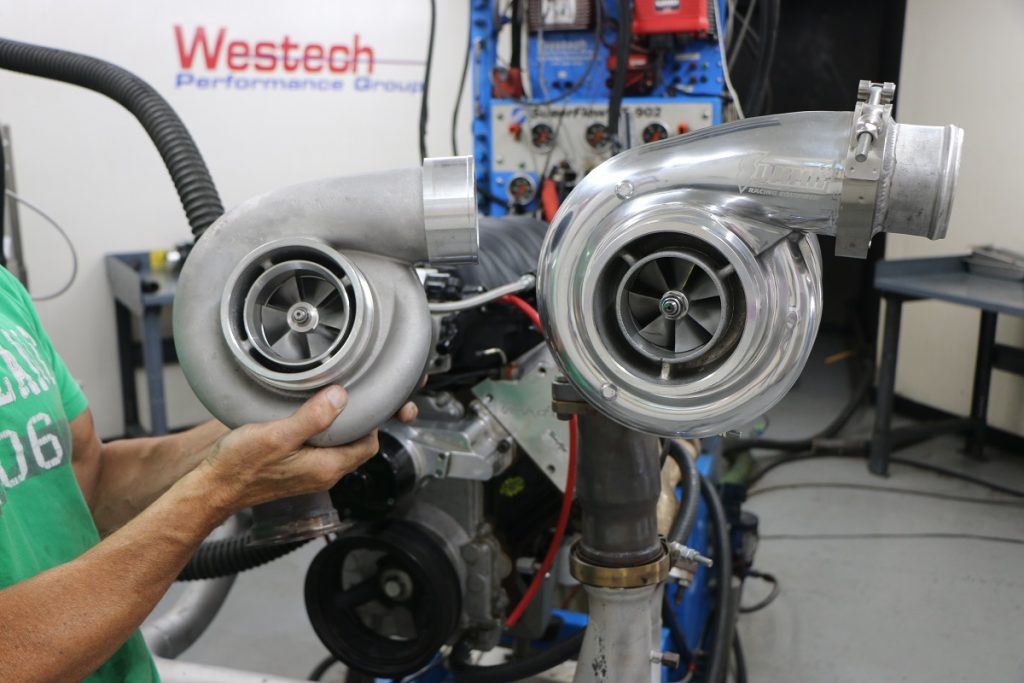
Turbos rule.
If you’re a turbo guy (or gal), there has never been a better time to be an enthusiast. Just look around, turbos are everywhere and on everything.
Not long ago, many people didn’t even understand how turbochargers work, let alone attempt to install them on their hot rod. Unless your name was Gale Banks or Corky Bell, you left turbos alone.
Fast forward a few decades and the advent of automotive internet forums, YouTube, and eBay have ushered in the modern turbo era.
Never in history have turbos been so available and affordable, but it is this over-abundance that creates confusion. The massive availability of cost-effective, offshore turbos has everyone jumping on the boost wagon, but many are doing so without a basic understanding of the differences between various turbo offerings.
The offshore turbos have many enthusiasts selecting them based solely on price—because a turbo is just a turbo, right?
While everyone wants a good deal, there is more to turbo selection than simply price.
To illustrate the difference a turbo cam make, we selected a pair of popular turbos, one from eBay and the other from Summit Racing. Though eBay doesn’t manufacture their turbos, this popular GT45-style turbo offered the best combination of price and power potential.
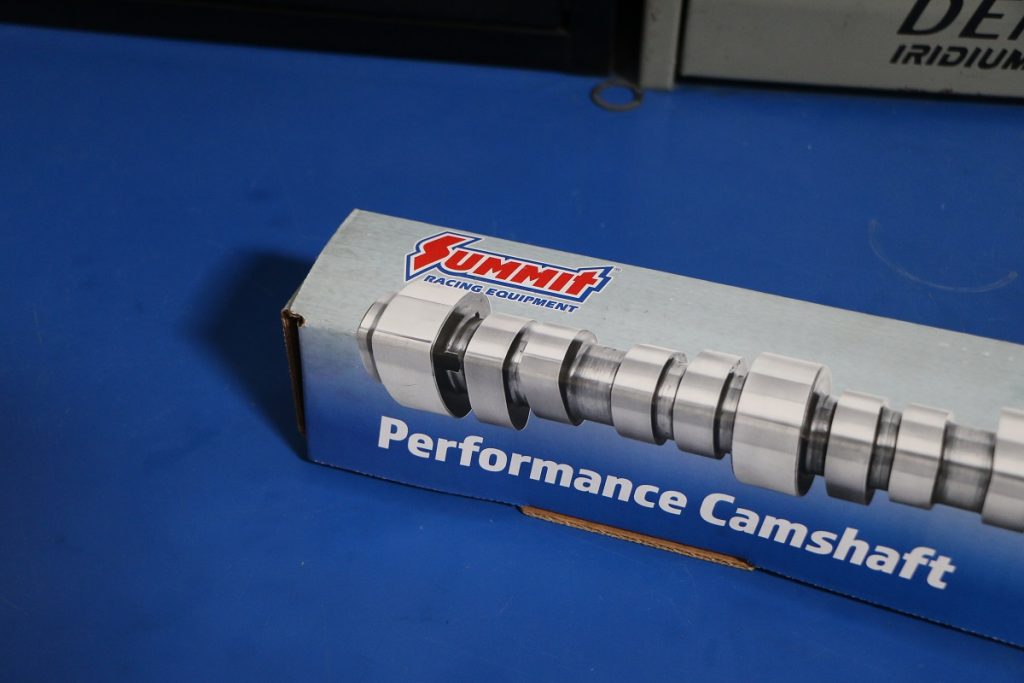
This turbo can be sourced through a variety of resellers, as most repackage or simply resell the same product under their own name. Our eBay turbo actually came from the folks over at DNA Motorsports.
There might be some confusion about this turbo, as there seems to be different versions available. If our spec sheet is to be believed, our GT45 featured a 50-trim compressor wheel, with a 68.9-mm inducer, and 98-mm exducer.
The T4 exhaust featured a 1.05 A/R ratio, an 88.7-mm inducer, and 77.5-mm exducer. Though offered at a variety of different price points, ranging from our cost of $163 to over $400, the eBay turbo was certainly affordable.

By contrast, the $649 S475 turbo offered by Summit Racing was considerably more expensive.
The spec sheet on the Summit turbo made up for at least some of the cost difference, as the T6 turbo offered a larger 75-mm inducer, and 100-mm exducer on the compressor side and a hot side equipped with an 88-mm exducer, and 96-mm inducer. The T6 housing also featured a 1.32 A/R ratio to further improve exhaust flow.
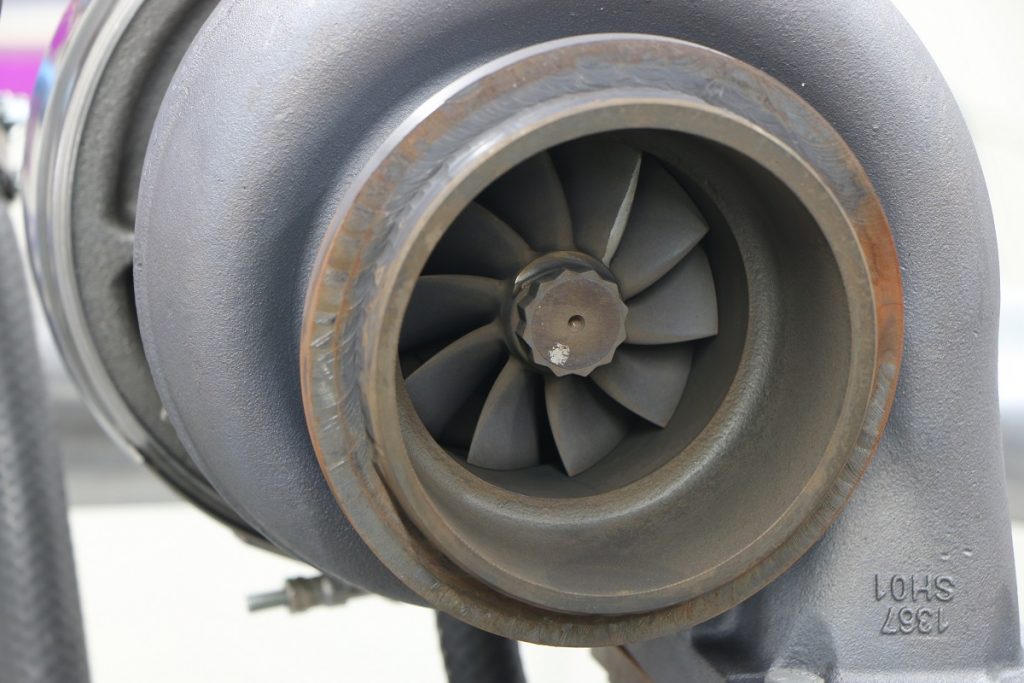
Spec sheets are all well and good, but how do they actually perform?
For most people, a turbo is just about boost, more boost equals more power, right?
I mean, all you have to do is keep cranking up the boost, and the turbo will keep making more power.

Unfortunately, like any air pump, there is a limit to how much a turbo will flow.
Forget about the boost and think more about airflow.
A turbo will only flow so much, and boost is simply a measurement of the restriction inherent in the engine it happens to be flowing air into. At some point, the turbo will be unable to flow additional air, either because of a limitation in the compressor or turbine side, and then boost will drop.
This is exactly what we saw in this comparison, but first we need to quickly cover the test engine.
The 5.3L LM7 Test Engine

On loan from Roadkill’s David Freiburger, the 5.3L LM7 featured a stock block and crank combined with forged rods and pistons. The powdered-metal rods and cast pistons were ditched in favor of a set of 6.125-inch, K1 rods and Wiseco forged pistons. The motor also received a set of TFS 205 heads and FAST LSXR induction system. In addition to the intake, FAST also supplied a set of coils, injectors and a 102-mm, Big-Mouth throttle body.
On loan from Roadkill’s David Freiburger, the 5.3L LM7 featured a stock block and crank combined with forged rods and pistons. The powdered-metal rods and cast pistons were ditched in favor of a set of 6.125-inch, K1 rods and Wiseco forged pistons.
The motor also received a set of TFS 205 heads and FAST LSXR induction system. In addition to the intake, FAST also supplied a set of coils, injectors and a 102-mm, Big-Mouth throttle body.
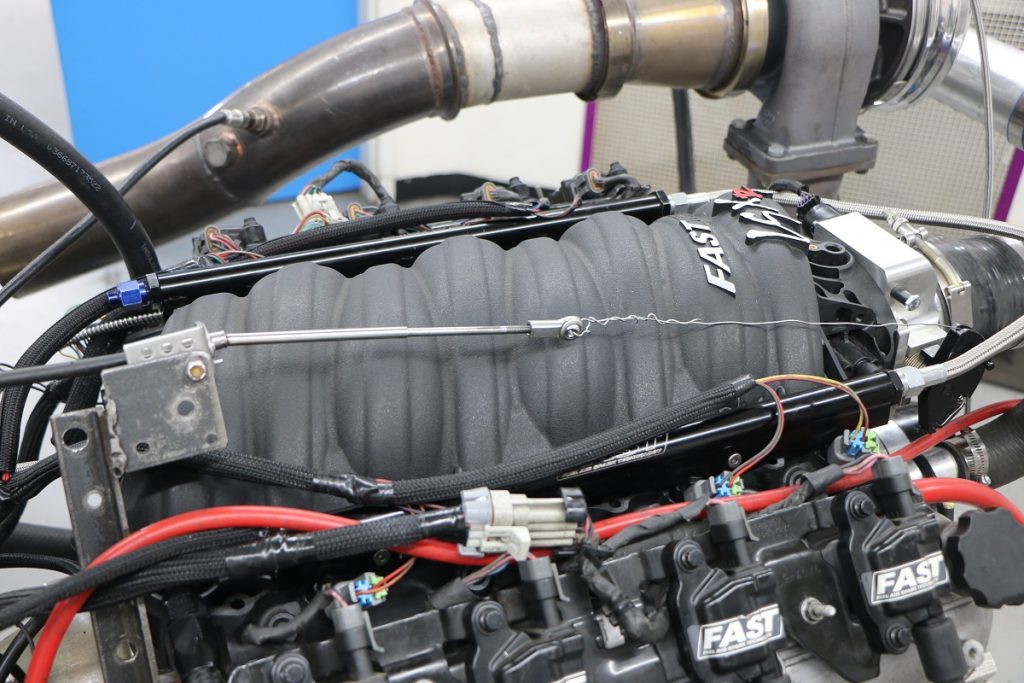
Because we were testing a pair of turbos, naturally we needed some kind of turbo kit.
Less a kit then a DIY project, the turbo system consisted of a pair of stock truck exhaust manifolds feeding a custom Y-pipe.

The Y-pipe merged the exhaust flow from each bank of cylinders in the V8 to a single three-inch, V-band outlet. The three-inch V-band was used to allow us to run both T4 and T6 turbos, using the respective adapters.


One of the mistakes we made—and why there will be a part two follow-up to this test—is that we relied on a manual waste-gate controller to raise the boost.

The manual controller resulted in slightly different boost curves for the two turbos, despite the use of a pair of Turbo Smart Gen-5 waste gates.

Boost from each of the turbos was run through an air-to-water intercooler from ProCharger. Both turbos were run with the same 11.8:1 A/F ratio and with 20 degrees of total timing at the power peak (less at the torque peak). With our DIY turbo system ready to accept both turbos, it was time to test.
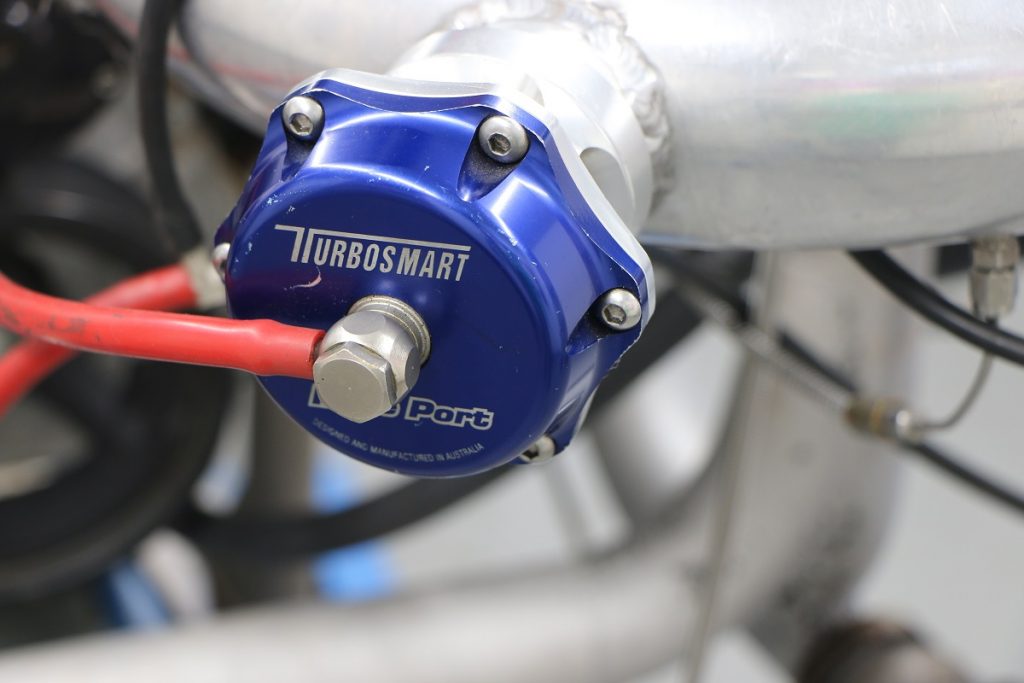

eBay GT45 Turbo Test

First up was the eBay GT45 turbo. To ensure we had the tune nailed down, we started out running on the waste-gate springs of 7 psi. Using the manual controller, we raised the boost pressure until we started to get diminishing returns from the turbo.

After reaching a peak boost of 14.5 psi early in the run, the boost pressure dropped down to just 10.1 psi at 6,500 rpm. The falling boost curve produced a peak power reading of 776 horsepower at just 5,600 rpm. The upside to having lots of boost at lower engine speeds was a healthy peak-torque reading of 786 foot-pounds at 4,500 rpm.
To give you an idea, run naturally aspirated, this combination would make peak power closer to 6,500 rpm, so the turbo and dropping boost curve were definitely altering the power curve. Though available maximum flow, from what is likely an 800-hp turbo, was certainly the major contributor, the method of boost control was also a factor.

Had we run an electronic (three- or four-port) boost controller, the boost curve would be more consistent. We know the eBay turbo should be able to run a consistent boost level of 10 psi, but we doubt it will go more than one or two extra psi before it runs out of flow.
Summit Racing S475 Turbo Test

After running the eBay GT45 turbo, off it came and on went the T6 Summit S475 turbo. The turbo was configured to flow through the same ProCharger intercooler and was run at a variety of different boost levels up to a peak of 17.3 psi.
Because the larger S475 turbo was capable of supporting more power, the boost curves were slightly flatter on the Summit turbo. It wasn’t until we ran the boost up that we started seeing a dropping curve, but nowhere near as dramatic as the smaller turbo.
Run at a peak boost of 17.3 psi (at 3,700 rpm), the boost dropped to 14.7 psi at at 6,500 rpm. The dropping boost curve meant the turbo motor produced peak power at 6,100 rpm, but this was still at a higher engine speed than the smaller GT45 turbo. Even with the dropping boost curves, it is obvious the Summit turbo had more to offer than the smaller GT45, so if all you need is 800 (flywheel) hp, then go for the eBay unit. If, like most turbo owners, you plan on cranking it up, then the Summit turbo is definitely worth a look.

turbo allowed us to run the boost as high as 17.3 psi, but, like the eBay turbo, the falling boost curve dropped the pressure to just 15.3 psi at the power peak. We plan to redo this test with a three-port, electronic waste-gate controller to get a better handle on the boost curves, but we still expect the difference between the turbos to be somewhere near 200 hp! (Image/Richard Holdener)
On our next test, we plan to monitor the backpressure to show how the power output affects the exhaust flow, and therefore the backpressure. This backpressure works to open the waste-gate valve, reducing the boost. With boost pressure applied to the top of the valve, we hope to counter this effect, but the change in boost curves and absolute max outputs will have to wait until next time.
5.3L Turbo Test: EBay GT45 vs Summit S475 (HP & Torque)

Boost Curves — 5.3L Turbo: eBay GT45

Boost Curves—5.3L Turbo: Summit S475


Is it worth it compared to the ease of install and low cost of nitrous?
Wait… Two different size turbo’s? How is that a “comparison”? Forget about the boost controller, that’s the least of your worries.
It seems more to me that it is a comparison of size and trim . I plan on going with a VS 7875 with a 1.25 trim for mine because I want a rising boost curve and a balance of heat dissipation that allows possibly an air/air intercooler. We live in a one stoplight town and can be on the interstate in 3 minutes.
This composition only prices that a bigger turbo makes more power, how come I didn’t think of that before?
This comparison only prices… That autocorrector
Anytime you double the wastegate spring pressure you’re going to get falling boost curves like that. It’s just amplified more on the cheaper turbos. Let alone you’re comparing a T4 to a T6 turbo. You have 2 different sizes and of course the larger turbo is going to flow more air. This whole comparison was flawed before it even began. As for my experience and knowledge, it all comes from years of racing and building high horsepower motors from 4 cylinder beasts to V8s
Chris … I wanna twin turbo my ’98 454… I wanna use 2 X GT45…
I wanna use forward facing headers.
Is this a good idea?
Or should I use 1 X S475 w/ truck exhaust manifolds (as above)
I would appreciate advise
In a truck, it depends, lower numbers like a .96 which should be considered a racing turbo vs a 1.25 which is more likely a happy camper with street manners. Those are existential questions of what you want and how your engine is built. This 5.3 with a .96 needs a big bad turbo! A likely a T6 to feed it and 5-6 inch out pipes to prevent back pressure loss. I plan to adapt my 1.25 T4 to a 5 inch out and run a Y under the car for a pair of 3 inch out to in front of the back wheels. JMO, but I am still learning, building 700 hp NA is different than boosted, so I am keeping an open mind.
Wow. Internet writing continues to fail to impress.
Never mind the poor editing, but not even including a N/A baseline power graph? And then the obvious and already mentioned two entirely different turbos…
As a suggestion for the follow-on (if it hasn’t already been done), overlay the boost curves on the dyno graphs, aligned by RPM of course, with a chart of HP & Lb/Ft numbers.
Share some truly useful information.
These things will come. I am impressed by the fact that they used a diy method that I intend to emulate on my 1965 Galaxie. The manual boost controller hurt. Watch U tube, Richard is no Jack leg journalist. What I got from this that if I intend to fit a single system, I will use this as a template and instead of the GT45 I thought of, at 394 ci FE with the truck logs reversed I want a T4 that can hold a 14.7 boost rising boost curve . The Summit 7875 appears to be my choice.1.25 ratio in a heavy car a 3000 stall converter C6 that will like happily to 6200 maintaining a rising balance to 2 bar at 6000-6200 for a 820 hp midnight Blue Galaxie. Those salients are what I got. Get in the Golilocks zone on boost vs aggression of such. NA it is important but it can’t make more than what you are able to feed it. Our two engines the 5.3 vs my 6.5 will likely scroll and maintain similar boost and NA HP that it can feed the turbo. Does that make sense at a basic level?
It’s an engine that David Freidburger built. The article has been repeated over and over, it made 451HP. Damn you car guys cry like babies. Nitpicking about everything.
How are you “comparing turbos” by using turbos that cost different amounts and are different wheel sizes????? this is the silliest thing I’ve read in a while. Shocker, larger more expensive turbo makes more power. Who could have foreseen this??
Compare same wheel sizes or same cost turbos. this was a pointless article.